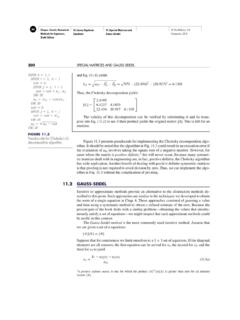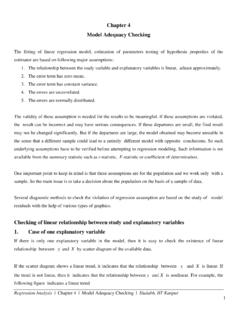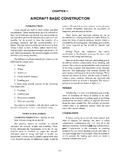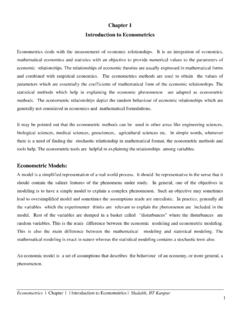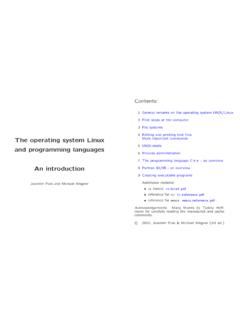Transcription of Socket Programming - IITK
1 Socket ProgrammingKameswari ChebroluDept. of Electrical Engineering, IIT Kanpur Background Demultiplexing Convert host-to-host packet delivery service into a process-to-process communication channelApplicationprocessApplicationproc essApplicationprocessTransportPackets arrivePortsQueuesPacketsdemultiplexedSrc PortDstPortChecksumLengthData01631 Byte Ordering Two types of Byte ordering Network Byte Order: High-order byte of the number is stored in memory at the lowest address Host Byte Order: Low-order byte of the number is stored in memory at the lowest address Network stack (TCP/IP) expects Network Byte Order Conversions: htons() - Host to Network Short htonl() - Host to Network Long ntohs() - Network to Host Short ntohl() - Network to Host Long What is a Socket ? Socket : An interface between an application process and transport layer The application process can send/receive messages to/from another application process (local or remote)via a Socket In Unix jargon, a Socket is a file descriptor an integer associated with an open file Types of sockets : Internet sockets , unix sockets , sockets etc Internet sockets characterized by IP Address (4 bytes), port number (2 bytes) Socket Description Encapsulation Types of Internet sockets Stream sockets (SOCK_STREAM) Connection oriented Rely on TCP to provide reliable two-way connected communication Datagram sockets (SOCK_DGRAM) Rely on UDP Connection is unreliable Socket () -- Get the file descriptor int Socket (int domain, int type, int protocol).
2 Domain should be set to PF_INET type can be SOCK_STREAM or SOCK_DGRAM set protocol to 0 to have Socket choose the correct protocol based on type Socket () returns a Socket descriptor for use in later system calls or -1 on errorint sockfd;sockfd = Socket (PF_INET, SOCK_STREAM, 0); Socket Structures struct sockaddr: Holds Socket address information for many types of sockets struct sockaddr_in: A parallel structure that makes it easy to reference elements of the Socket address sin_port and sin_addr must be in Network Byte Orderstruct sockaddr { unsigned short sa_family; //address family AF_xxx unsigned short sa_data[14]; //14 bytes of protocol addr}struct sockaddr_in { short int sin_family; // set to AF_INET unsigned short int sin_port; // Port number struct in_addr sin_addr; // Internet address unsigned char sin_zero[8]; //set to all zeros } Dealing with IP Addresses int inet_aton(const char *cp, struct in_addr *inp); inet_aton() gives non-zero on success; zero on failure To convert binary IP to string: inet_noa()printf( %s ,inet_ntoa( )); struct sockaddr_in my_addr; = AF_INET; = htons(MYPORT);inet_aton( ,&( ));memset(&( ),'\0',8);struct in_addr { unsigned long s_addr; // that's a 32 bit long, or 4 bytes}; bind() - what port am I on?
3 Used to associate a Socket with a port on the local machine The port number is used by the kernel to match an incoming packet to a process int bind(int sockfd, struct sockaddr *my_addr, int addrlen) sockfd is the Socket descriptor returned by Socket () my_addr is pointer to struct sockaddr that contains information about your IP address and port addrlen is set to sizeof(struct sockaddr) returns -1 on error = 0; //choose an unused port at random = INADDR_ANY; //use my IP adr Exampleint sockfd;struct sockaddr_in my_addr;sockfd = Socket (PF_INET, SOCK_STREAM, 0); = AF_INET; // host byte = htons(MYPORT); // short, network byte = inet_addr(" ");memset(&( ), '\0', 8); // zero the rest of the structbind(sockfd, (struct sockaddr *)&my_addr, sizeof(struct sockaddr));/** Code needs error checking. Don't forget to do that ** / connect() - Hello! Connects to a remote host int connect(int sockfd, struct sockaddr *serv_addr, int addrlen) sockfd is the Socket descriptor returned by Socket () serv_addr is pointer to struct sockaddr that contains information on destination IP address and port addrlen is set to sizeof(struct sockaddr) returns -1 on error No need to bind(), kernel will choose a port Example#define DEST_IP " "#define DEST_PORT 5000main(){ int sockfd; struct sockaddr_in dest_addr; // will hold the destination addr sockfd = Socket (PF_INET, SOCK_STREAM, 0); = AF_INET; // host byte order = htons(DEST_PORT); // network byte order = inet_addr(DEST_IP); memset(&( ), '\0', 8); // zero the rest of the struct connect(sockfd, (struct sockaddr *)&dest_addr, sizeof(struct sockaddr)); /** Don't forget error checking **/ listen() - Call me please!}
4 Waits for incoming connections int listen(int sockfd, int backlog); sockfd is the Socket file descriptor returned by Socket () backlog is the number of connections allowed on the incoming queue listen() returns -1 on error Need to call bind() before you can listen() Socket () bind() listen() accept() accept() - Thank you for calling ! accept() gets the pending connection on the port you are listen()ing on int accept(int sockfd, void *addr, int *addrlen); sockfd is the listening Socket descriptor information about incoming connection is stored in addr which is a pointer to a local struct sockaddr_in addrlen is set to sizeof(struct sockaddr_in) accept returns a new Socket file descriptor to use for this accepted connection and -1 on error Example#include < >#include < >#include < >#include < >#define MYPORT 3490 // the port users will be connecting to#define BACKLOG 10 // pending connections queue will holdmain(){ int sockfd, new_fd; // listen on sock_fd, new connection on new_fd struct sockaddr_in my_addr; // my address information struct sockaddr_in their_addr; // connector's address information int sin_size; sockfd = Socket (PF_INET, SOCK_STREAM, 0); = AF_INET; // host byte order = htons(MYPORT).}
5 // short, network byte order = INADDR_ANY; // auto-fill with my IP memset(&( ), '\0', 8); // zero the rest of the struct // don't forget your error checking for these calls: bind(sockfd, (struct sockaddr *)&my_addr, sizeof(struct sockaddr)); listen(sockfd, BACKLOG); sin_size = sizeof(struct sockaddr_in); new_fd = accept(sockfd, (struct sockaddr *)&their_addr, &sin_size); send() and recv() - Let's talk! The two functions are for communicating over stream sockets or connected datagram sockets . int send(int sockfd, const void *msg, int len, int flags); sockfd is the Socket descriptor you want to send data to (returned by Socket () or got from accept()) msg is a pointer to the data you want to send len is the length of that data in bytes set flags to 0 for now sent() returns the number of bytes actually sent (may be less than the number you told it to send) or -1 on error send() and recv() - Let's talk! int recv(int sockfd, void *buf, int len, int flags); sockfd is the Socket descriptor to read from buf is the buffer to read the information into len is the maximum length of the buffer set flags to 0 for now recv() returns the number of bytes actually read into the buffer or -1 on error If recv() returns 0, the remote side has closed connection on you sendto() and recvfrom() - DGRAM style int sendto(int sockfd, const void *msg, int len, int flags, const struct sockaddr *to, int tolen); to is a pointer to a struct sockaddr which contains the destination IP and port tolen is sizeof(struct sockaddr) int recvfrom(int sockfd, void *buf, int len, int flags, struct sockaddr *from, int *fromlen); from is a pointer to a local struct sockaddr that will be filled with IP address and port of the originating machine fromlen will contain length of address stored in from close() - Bye Bye!
6 Int close(int sockfd); Closes connection corresponding to the Socket descriptor and frees the Socket descriptor Will prevent any more sends and recvs Connection Oriented Protocolsocket()connect()bind()accept()s end()recv()listen() Socket ()send()recv()S erverClientclose()close() Connectionless Protocolsocket()bind()bind()recvfrom()se ndto() Socket ()recvfrom()sendto()ClientSe rverclose()close() Miscellaneous Routines int getpeername(int sockfd, struct sockaddr *addr, int *addrlen); Will tell who is at the other end of a connected stream Socket and store that info in addr int gethostname(char *hostname, size_t size); Will get the name of the computer your program is running on and store that info in hostname Miscellaneous Routines struct hostent *gethostbyname(const char *name); Example Usage:struct hostent {char *h_name; //official name of hostchar **h_aliases; //alternate names for the hostint h_addrtype; //usually AF_NETint h_length; //length of the address in byteschar **h_addr_list; //array of network addresses for the host}#define h_addr h_addr_list[0]struct hostent *h;h = gethostbyname( );printf( Host name : %s \n , h >h_name);printf( IP Address: %s\n ,inet_ntoa(*((struct in_addr *)h >h_addr))); Advanced Topics Blocking Select Handling partial sends Signal handlers Threading Summary sockets help application process to communicate with each other using standard Unix file descriptors Two types of Internet sockets : SOCK_STREAM and SOCK_DGRAM Many routines exist to help ease the process of communication References Books: Unix Network Programming , volumes 1-2 by W.
7 Richard Stevens. TCP/IP Illustrated, volumes 1-3 by W. Richard Stevens and Gary R. Wright Web Resources: Beej's Guide to Network Programming ~beej/guide/net/

